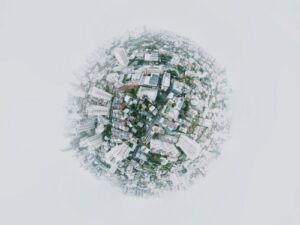
How Predictions Would Change our World
I knew they would run out of the stuff that I like! I knew there would be a 30 minutes wait! I should have come earlier, but I was too lazy, in denial, and wanted to take my chances. I knew that the baby was going to fall, that the dog would run. I knew that I would be good in rifle shooting, and that I would love flying, even though I never tried them before.
Humans’ ability to predict is key to many of our cognitive abilities. We go to the airport because we predict that planes would be there as well as people to check us in to our flights. We go to coffee places because we predict that we would find a place to sit there and coffee that we would like.
Prediction is available to us and most living beings at many scales, enabling us to drive our cars confident we would find parking, then going for the streets that we predict would have parking. It enables us to go out to an area of town predicting we would find good bars there, and then going for those bars that we predict would have the best music together with a line that’s not too long at that time.
Prediction is not New…
In Artificial Intelligence and other technological and mathematical fields of study Prediction is synonymous to much of what people are doing. Educational Psychology aims to predict behavior of kids, adolescents and adults. Economics aims to predict behavior of economic systems. Cybernetics aims to predict (and control) systems. Artificial Intelligence, Statistics, Mathematics, and other related fields enable tools for use in systems that predict the future. So what is new today, now, in our time?

But a New Kind of Prediction will Come
In the future we would see a new kind of predictions, those focused on the everyday life. Those predictions would be about behaviors of individuals in streets, homes, and restaurants. They would be about behaviors of cars, animals, and babies.
These everyday predictions would change our world. They would enable applications that replace our cognitive choices by guiding our cars and later our cognition to those restaurants that the Artificial Intelligence (AI) predicts would have places to sit or the kind of people we would like when we arrive. They would enable applications that predict when a toddler would go onto the street and when a dog would do the same.
These predictions are not new to AI. Any student in a first class on machine learning can do these, given the right data. The availability of that right data, together with the right user-interfaces (on devices that are yet to emerge), would enable those predictions to become everyday necessity.
Cars, our main way for individual mobility today, would be the first to be affected because they are the closest we have today to robots that extend our bodies with mobility. Cars would naturally be given decision or recommendation powers over everyday choices, such as which play, coffee place, bakery, or clothing store to go to. They would be personalized, knowing when we are showered and ready to go, and also predictive, knowing when we would be done with the meeting, and where we would likely want to go next.
After cars would come cognitive extensions that would seamlessly meld with our neurological physiology, controlling the world upon our wishes (“turn off the lights!”), informing us with relevant information (“you’re going to be late for your meeting”), and shortly thereafter giving this to us for free in return for access to advertising to our brains (“You know you’re thirsty… Starbucks coffee is right around the corner on the right!”).
That’s around when cars would become autonomous at the level of them becoming human-driver free. Critical to this autonomy would be an enabling technology of prediction: cloud-based, compiled, and delivered daily to our cars and our cognitions together. The ability to predict when a toddler would run onto the road would then become available to every car, enabling the public trust in cars making their own decisions.
Our Behavior would Change
Google changed the world when it delivered search to the internet in a reliable way. It allowed everyone to become smarter by easily gaining access to more knowledge. It is hard to remember a time when there was no web search. The information that people created on the worldwide-web was finally easy to access, changing our lives by allowing us to go places, buy stuff, and make decisions more effectively.
Prediction will make an even bigger change, applying AI to that information available from the WorldWide-Web, Internet-of-Things, and widely deployed connected sensors. We would no longer need to search, but rather ask our AI to search, synthesize, and deliver to our needs.
Twenty years ago we considered children to be lazy, using calculators and small computers instead of their brains to do math. Today we consider children to be lazy, preferring to consume YouTube and social media instead of reading books, using internet search to do their homework instead of studying and then thinking hard.
In the future, about twenty years from today, we would have machines predicting everyday things for us, integrated into our lives, and (gasp) making decisions for us. If we think that children of today are lazy, the children of the prediction age would surprise us. They would relinquish one more ability to our new cognitive prosthetics. They would rely on machine predictions for their everyday lives.


